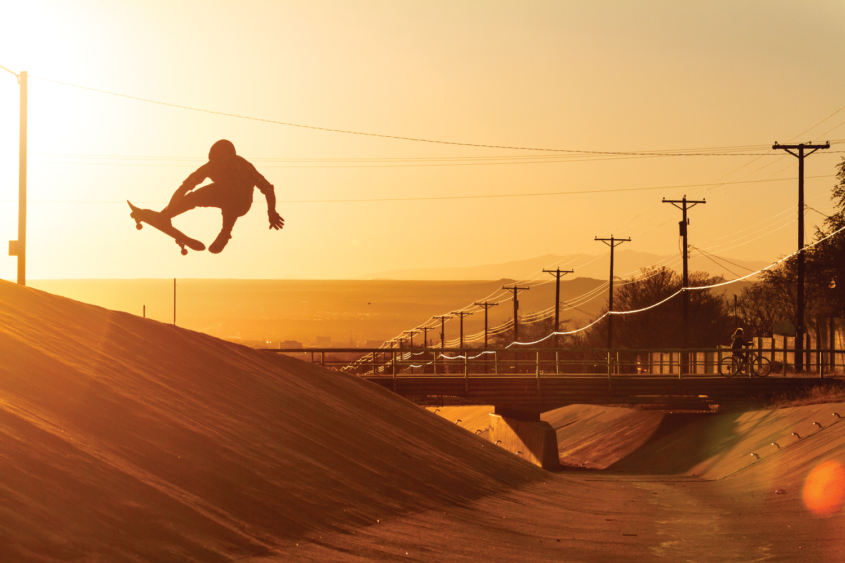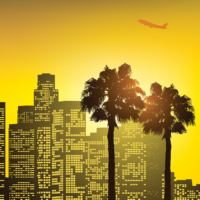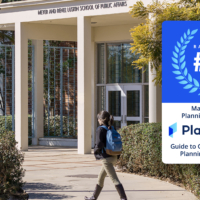From Professional Skateboarder to Urban Planner Photographer-turned-student changes course after more than 10 years working in the skateboard industry
Excerpted from a Q&A by Katrina Deloso
Max Dubler is a Los Angeles-based photographer, writer, videographer, designer, downhill skateboarder and, now, master’s student at UCLA Luskin.
Dubler began his pursuit of a Master of Urban and Regional Planning degree at UCLA in fall 2021 after more than 10 years working in the skateboard industry. Although he was a sponsored rider for a while, most
of his experience has been as a photographer and magazine writer.
“I lived in a house with a bunch of skateboarders, and we would go out to Malibu and skate hills all day. When it was my turn to drive the car, I would go down ahead of the skaters and shoot photos,” Dubler recalled. When he wasn’t at home in L.A., he was traveling across America and the world making photographs and videos of his friends, which he sold to skateboard companies and skate media outlets.
How did he make the connection from skateboarding to urban planning?
“I wanted to understand skateboarding on a more intellectual level. The skateboard is a simple toy that has been invented thousands of times. Why did it catch on in Southern California in the 1960s?” Dubler said. “I realized that skateboards needed a hard, flat surface to roll on, and that those surfaces did not exist in large quantities until cars took over the built environment.”
In Southern California, concrete embankments are commonplace to prevent erosion. “I figured that those concrete waves made skateboarding fun enough to stick with after you fell for the third time,” he said. “Over the long term, the history of skateboarding mirrors the history of the built environment itself.”
In his travels, Dubler took note of how built environments shaped his sport. The soft sandstone of Southern California produces swooping, banked turns with a flowing quality — he says the one-way downhill Tuna Canyon Road in Malibu is the top-tier experience for downhill skateboarders. But in Colorado, many highways are cut straight through massive granite mountains, making
for a very different style of skateboarding.
“Street skateboarding is very reactive to landscape architecture,” he said. “Downhill skateboarding is more in the civil engineering space.”
Dubler later met planners through personal connections. And when he and his friends were forced to move after a wave of homes on their block in Westchester were bought out, renovated, flipped and sold, “I realized I had to have opinions about urbanism.”
Skateboarding remains banned or heavily restricted in many cities. “Skateboarding is superficially dangerous — kids frequently fall and break their wrists when they’re learning to ride — and since the ’70s there’s been this attitude that if kids are being hurt, we need to ban something,” Dubler said.
Plus, skateboarding culture has portrayed itself as a rebellious, counter-culture activity, for better or worse.
“It’s a creative approach to the built environment and an appropriation of landscape architecture as a space for play,” he said. “You’re not supposed to jump down a handrail — you’re supposed to use it to get down the stairs safely. So, it’s transgressive in its very nature.”
As a planner, Dubler sees a future for skateboarding as something more than a recreational outlet for “teenage white dudes” attempting dangerous stunts.
“The urban planning version of this is complete streets that are not designed solely for cars and parking, but where skateboards could roll next to bikes,” Dubler said. “That’s my vision at least: a lot more women, older people, queer people, people of color riding skateboards for fun and transportation and not buying into this very narrow vision of what skateboarding is and who it’s for.”










Leave a Reply
Want to join the discussion?Feel free to contribute!